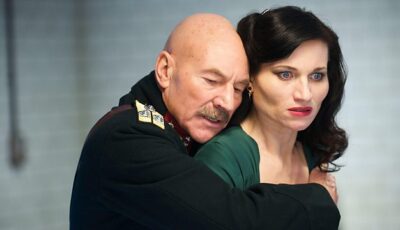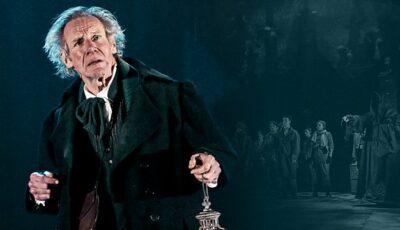Literacy learning for every level: Supporting a mixed curriculum in Scotland
St George’s School, Edinburgh
At St George’s School for Girls, an independent school in Edinburgh, the English department is embracing video-based learning to enrich its curriculum across key stages. With a dual curriculum structure incorporating both GCSEs and Scottish Highers, the department faces unique challenges in finding high-quality, curriculum-aligned content. For English teacher, David Robinson, the ERA streaming platform has become an increasingly valuable tool—one that fills content gaps, enhances student engagement and provides new avenues for interpretation and understanding of complex literary texts.

Building awareness: “I’ve been aware of ERA for at least two years”
David, who has extensive international teaching experience, first encountered ERA over two years ago. Initially using it sporadically, he saw early potential: “I’ve been aware of it for at least two years, so I have occasionally shown bits of it with my class. I think there’s some really good content on there and I have shared it with students.”
As new content relevant to core texts like Macbeth, An Inspector Calls, and A Christmas Carol became available, David has shared the platform more widely with the schools GCSE cohort:
“We shared it this year with my current GCSE students… and I just re-shared it with them recently.”
A curriculum that crosses borders
The English department at St George’s navigates both the English and Scottish curricula:
“We operate a mixed curriculum, so we do English GCSEs and then we switch over and we do Scottish Highers and Advanced Highers.”
This means teaching from year 7 through to year 13, with students encountering a diverse array of texts and expectations. For David, ensuring consistent, accessible resources across this broad spectrum is a priority—particularly when teaching Shakespeare or plays like A View from the Bridge.
Beyond YouTube: The value of quality and accuracy
Prior to using ERA, David relied heavily on YouTube but encountered some limitations:
“YouTube is probably the first-place people go… but it has all kinds of random content on it. It has pop-ups, it has adverts and you can’t be sure what the quality is going to be.”
When looking for resources for particular texts, ERA was particularly useful
“One example would be A View from the Bridge… There’s almost nothing on YouTube. The film made in the 50s isn’t great… but ERA has tonnes of stuff—adaptations, documentaries with Arthur Miller talking about it, and all sorts of content.”
Teaching with ERA
Rather than using a single approach, David tailors video content to suit the specific goals of a lesson.
“With Macbeth, you might watch a whole version to help students understand the characters but we’ll also sometimes study a scene, then watch that specific scene in a version that’s available on ERA.”
For poetry, the structure shifts slightly: “I’ll read the poem first, do some basic background, and then watch the video. I’ll have students take notes and we might watch it multiple times.”
The impact of these methods is clear.
“It can turn something from being boring and incomprehensible to something that’s totally accessible.”
Engagement and interpretation: “It opens things up”
For Shakespeare and other challenging texts, seeing performances—especially quality ones—is crucial. “Teaching Shakespeare without video is extremely difficult, using video opens up different interpretations and different ways of understanding.”
Poetry benefits too, provided the visuals match the tone and content:
“If it’s just one person reading face-to-camera, that’s boring. But if it’s well filmed and has helpful imagery, it can open up a poem in new ways.”
Sharing the resource with teachers alike
While David currently uses ERA more than most colleagues, the platform is beginning to make its mark across the department:
“I’ve shared links to ERA content. If a teacher says, ‘I can’t find something,’ I’ll say, ‘This will work for you.”
One standout example? “A View from the Bridge—ERA had content no one else did, and that made a big difference for our Higher English classes.”
Independent study and student access
ERA’s value isn’t limited to classroom use. David has encouraged students to access ERA at home:
“I’ve got them to create accounts and shown them where the good content is for Macbeth, An Inspector Calls and A Christmas Carol.”
While the school is still exploring the full potential of the Video Streaming Platform, the direction is clear:
“The more I find on it, the more I want to target things towards it.”
Enhance teaching of set texts on the BBC Literary and Shakespeare Archive

An Inspector Calls

Macbeth (2010)

